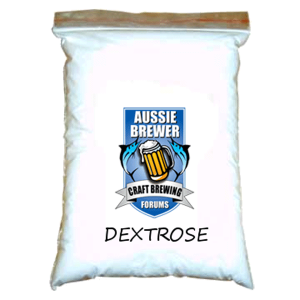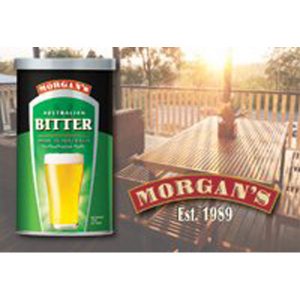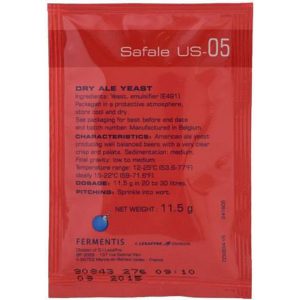KEGS:
The kegs used in most systems are post-mix kegs, made of stainless steel with a hatch cover for ease of cleaning and filling. They include gas in and beer out valves as well as a safety release valve. These types of “kegs” vary in size from as small as 9 up to 50 liters. The most common is 18 litre and 22 litre, which are ideal for the home brewer as they hold a standard brew.
DISCONNECTS:
There are a couple of different types, pin lock and ball lock (snap lock). We supply ball lock, which are available in stainless steel and plastic and work on the same principle as your standard garden hose fittings, they click on and click off for easy connection and disconnection of the beer and gas lines from the keg.
CO2 GAS BOTTLE:
The gas bottles come in various sizes. The most common and easiest to handle are the “D” size bottle. They are a bit taller than knee height and weigh under 20kg. Other sizes are available but can be quite heavy and difficult to move, not to mention unsightly. Gas bottles are available for hire from BOC Gases or Air Liquid amongst others.
Bottle hire is expensive, usually about $160 per year plus gas and that’s for every year that you have the system. Keg King make a 6kg Steel, Australian approved bottle that is available from most homebrew shops for about $300.00. They can be filled at most gas outlets but you should check with your local gas retailer first. Some Homebrew shops operate a bottle exchange system or refill the bottles for you!
REGULATOR:
A full CO2 bottle will hold a pressure of approximately 800 psi (pounds per square inch) 5600 kpa, that’s a bit more than the 10 psi/70 kpa that’s needed to run this system, so a regulator is a must.
The regulator screws onto the gas bottle and reduces the pressure to safe levels. There are two gauges on the regulator, one for gas bottle pressure, the other for keg working pressure. The CO2 in the bottle starts out as a liquid and the pressure of the gas in the headspace of the bottle will be between 700 and 800 psi (5000 – 5600 kpa) depending on the temperature of the bottle.
The high pressure gauge on the regulator will only begin to fall when all the liquid is gone.
The best way to estimate how much CO2 is left in the bottle is by weight not pressure, so make a habit of weighing your bottle when you first get it. The bottle will be weighed and stamped when empty.
PREPARING THE FRIDGE:
Like bottled beer your kegs will need to be kept cold. With a standard keg holding a full batch of beer and being somewhat bigger than a bottle your fridge is going to need to be changed to suit your kegs, you may need to remove some or all of the shelves, you may also have to level the base.
Some older fridges are not level at the bottom and will need to be leveled. Use whatever suits you best.
You will need to drill a small hole to bring the gas line from the regulator into the fridge. Whether you choose the side or back of fridge is up to you.
NB: Make sure all power is disconnected prior to drilling.
Try and use a drill bit just large enough to allow gas line to fit snugly through hole. Before sealing gas line make sure there is sufficient length of line to reach out of the fridge.
NB: The wiring systems and cooling systems will vary from fridge to fridge so take care when drilling any holes in your fridge.
If your keg system is going to have a beer gun it’s just a matter of cutting the beer line to a length that suits you and attaching the gun to one end of the line and the beer disconnect to the other. The length of line should be between 1.5 and 2 meters long. If you choose to have a tap, there are more holes to be drilled. As stated before, take care when drilling. The position of the tap is your choice again. If putting the tap on the door of the fridge, make sure there is enough beer line so that the door can still be fully opened.
If deciding to put the tap on the door, when you tighten the back nut it may collapse the interior of the door. We have found a small length of PVC pipe pushed over the shank of the tap allows the tap to be tightened so that it is secure, without damaging the interior.
FILLING THE KEG:
Ferment your beer in the normal way. The day before fermentation is completed is the time to clean and sterilise the keg. You can use most of the liquid sterilizers sold in Homebrew shops in the same way that you would sterilise your bottles.
We have found the best way is to 3/4 fill the kegs with water and liquid sterilizer, hold the lid in place and fill with gas (40 PSI or 280 KPA ) allowing the pressure from the gas to seat the lid in place and then clip the lid down. Turn the keg upside down for about 4 hours and let the sterilizer get into the fittings at the top of the keg. If bacteria is going to grow this is the most likely spot. Then turn the keg upright and leave for another 4 hours to clean the bottom of the keg. Once this is complete release the gas, pour out the sterilizer and rinse with clean water.
The transferring of the beer to the keg is as simple as racking directly into the keg via a piece of clear sterilized tubing, cut to length so that it reaches from the tap of the fermenter to the bottom of the keg.
You will notice that there is a tube in the keg running from the top of the keg to the centre of the bottom. This is called the Drip Tube, this is how the beer is drawn from the keg. There is also another tube that is quite short in length. This is the Co2 inlet, where the Co2 is injected into the beer.
Your keg should be filled to approximately 12-25 mm (1/2 to 1 inch) from the bottom of this tube.
Now the keg is full replace the hatch cover and move keg to the fridge. Assuming your gas line was cut to length it should be long enough to reach outside the fridge so you can connect it to the gas bottle. Turn the gas bottle on and set pressure on regulator to 40 PSI or 280 KPA, hold the lid in place and connect the gas line to the keg. Allow the pressure of the gas to seal the keg and then clip the lid down.
What we have to do now is purge the air from the headspace of the keg and replace it with CO2. This is done to protect the beer from oxidisation. By lifting the pressure release valve the CO2 will flow into the keg and the air will flow out through this valve. This is called burping the keg and is best done in half a dozen short bursts.
CARBONATING:
The absorption of the CO2 into your beer can depend on many things, most particularly the temperature of the beer, the pressure at which it is applied and the length of time pressure is applied.
The CO2 will be absorbed at a faster rate when the beer is cold (the beer will not absorb gas as well at room temperature) so if you apply 40 psi (280 kpa) continually for 36-48 Hours under normal refrigeration temperature your beer should be ready to try.
We have found that two days at this pressure gives the correct carbonation. Depending on personal taste you may like more or less so there is some trial and error to find what is best for you, eg. For an English type Bitter you may prefer a lower rate of carbonation but on the other hand you may be making a German Weizen which should be more effervescent so again the rate of carbonation is up to you.
A short cut to this process which we have found works very well and is consistent, is to burp the keg as described and then while the gas line is connected and the pressure is set at 40 psi (280kpa) lay the keg on its side with the gas post on the top side. Rock the keg back and forward with your foot vigorously and you should start to hear the gas pumping into the keg. Continue this process until you cannot hear any more gas going into the keg.
Go and have a beer (About 5 minutes) and then repeat the process. Keep doing this for about 30 to 40 minutes on and off. After this time you should notice that you can not hear any gas going into the keg when you rock it which should mean the keg is gassed. To use this system you will need to make sure you have a long gas line, about 2 metres so the keg can be gassed outside the fridge. Once the keg is gassed you can either store it in the fridge or outside if you do not have the fridge space.
DISPENSING:
Now for the good part pulling that first beer.
First reduce your keg from carbonating pressure to dispensing pressure. Do this by turning down the set screw on the regulator, if the pressure doesn’t come down as you turn the screw you may have to vent the keg using the safety relief valve to release the excess pressure. A suggested dispensing pressure is 10 psi/70kpa.
Even though the beer that you kegged may have been clear you will still get some settlement at the bottom of the keg so the first glass may be not what you expected. We suggest pulling a couple of glasses through until it clears. Whether using a gun or a tap always dispense with it fully open, if it’s used part way opened you will end up with all froth and no beer.
Dispensing like carbonating can be trial and error, plenty of practice will see your right!
Having installed a keg system in your own home you have come a long way from the teaspoon of sugar in a long neck and it should give you many years of enjoyment. To convert psi to kpa multiply psi x 7 = kpa.





